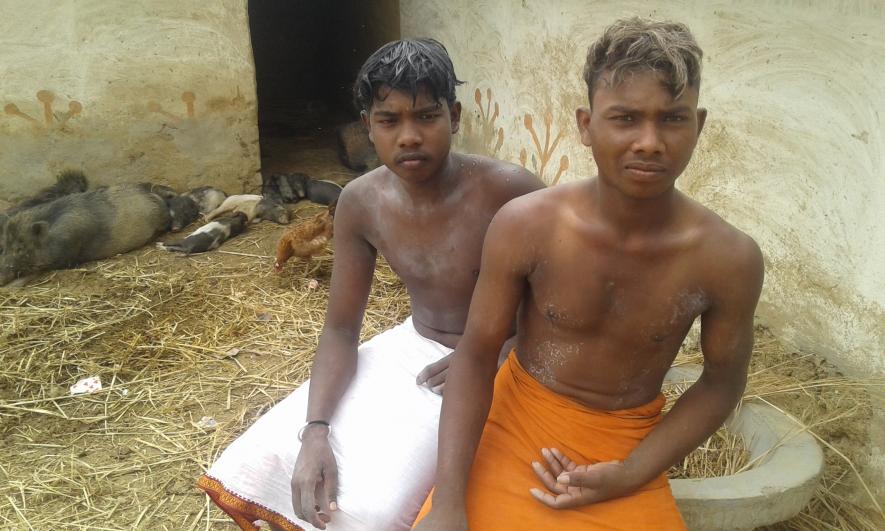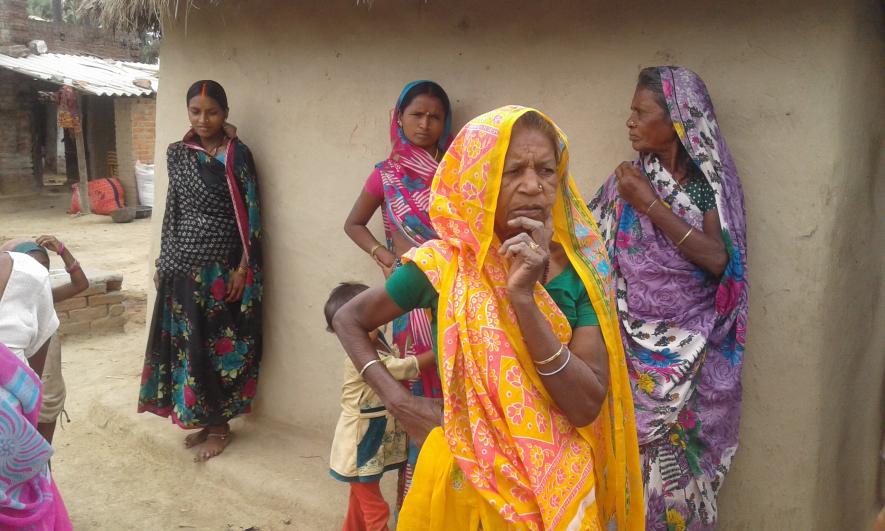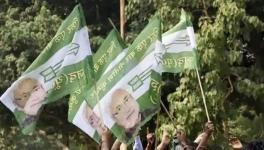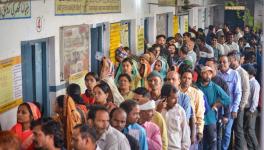Elections 2019: Polls Come and Go, No Progress for Mushahars of Bihar

Image courtesy: Mohd Imran Khan
Mohanpur (Gaya/Bihar): Chotu Manjhi has been without work for several days now. It is not easy for him to get work in his drought-hit village. He mainly works as a farm labourer and occasionally works as a construction worker. He sometime migrates to find work. He remembers how his parents and relatives have struggled their whole lives in search of livelihood, and he personally has no hope for better days either.
“There is nothing in our life except for struggle for livelihood. Our dream is not to become rich, to have agriculture lands and to become powerful. We want a simple life without livelihood crisis, a decent earning to survive and a life with respect and dignity, unlike my grandparents’,” says Chotu, an illiterate and landless Mushahar youth in his mid-20s, who is a resident of Arjuna village of the Gaya district.
Chotu said that the elections have come and gone, but their lives have not changed. “No one cares for us. We have been left to fight for our own livelihood without land,” he said.
He was seconded by Buchai Manjhi, another young Mushahar, locally known as Bhuiyan – owing to his community’s work of digging land (bhumi).
Buchai Manjhi also has no work. He spends time talking and chatting with the villagers, mostly belonging to his own community. “If we would have had some employment opportunities, our condition would have been better. Our life is full of plight, misery and we are still struggling for survival. Our condition is really bad; there is nothing to hide.”
A group of women belonging to the Mushahar community admitted that in spite of the Ujjwala scheme, they continue to use cow dung and timber to cook their food. “A gas cylinder’s cost is beyond our reach. We are spending only Rs 200 for cow dung. It is cheap and easily available,” said Manju Devi.
Chotu and Buchia, however, are relatively lucky, as their parents had constructed a house on the land provided to them by the state government nearly two decades ago.
Unlike the two of them, most of the Manjhis or Bhuiyas, belonging to a Dalit Mushahar community across Bihar, are living in thatched mud huts and houses, mainly built on gair-majarua (disputed government) lands. The community has been part of the most marginalised sections of the society for centuries, and has earned its livelihood by mainly working as labourers.
According to the official data, there are over 25 lakh Mushahars in the state. However, a Mushahar activist, Ashrafi Sada, said that there are more than 40 lakh Mushahars in the state. They continue to live in the separate hamlets, mostly outside the main villages.
Mushahars, the landless Dalits, who are sometimes referred to as 'rat eaters' or rat hunters, are one of India's most marginalised communities.
In Bihar, about 96.3% of them are landless, and 92.5% work as farm labourers. Literacy rates among this community, which upper caste Hindus still consider untouchable, is only 9.8% —the lowest among Dalits in the country. Barely 1% of the women in the community are literate.
In Lakhaipur Kuropati village, Baisakhi Manjhi said, “I am in my late 40s. I had seen my grandfather working as a bonded labourer in my childhood. Situation has changed a little for us now. At least, we are no longer forced to work as bonded (bandhua) labourer. But the struggle for livelihood continues.”
A group of Mushahar youths sitting at a small roadside shop in Kanchanpur Bhuiyan Toli, said that for Mushahars like them, life still revolves around food and livelihood insecurity.
“Where is the opportunity for the poorest of the poor like us? I have been looking for work for a long time, but in vain,” said Rahul Kumar Manjhi. Another youth, Sohan Manjhi, said that the BJP-led central government has made a false promise of jobs. “Where are the jobs? Many of us are jobless, and some of us are working as construction labourers in Bodh Gaya”.
A middle-aged Karu Manjhi told Newsclick that as Mushahars are landless, they hardly get any benefit provided to the farmers by the government. “Before last elections, Modi had promised Rs 15 lakh in our bank accounts. We stood in long queues to open bank accounts with a lot of hope, but never received a single penny."
Last year, the state government had declared 24 of 38 districts including Gaya drought-hit. Mohanpur was one of the worst affected areas of over 200 blocks of the state.
Mohanpur has been an area that was dominated by the Maoists until recently. It is at a distance of about 19 km from the holiest Buddhist shrine of Bodh Gaya and 40 km from Gaya. But unlike Bodh Gaya, Mohanpur is a different world altogether. Most residents belong to the backward castes, particularly Yadav and Mushahar communities. Though connected with rough concrete roads, it resembles an underdeveloped, backward and neglected rural setting.
Sharda Manjhi, a local leader from the Mushahar community in Mohanpur, told Newsclick, “Only old and middle aged Mushahars are keen to work under MGNREGA, not the young ones, as they want respectable wages for hard work. Many of them migrate to outside to work at brick kilns, factories and in the construction sector”.

A group of Mushahar women. Image courtesy: Mohd Imran Khan
He pointed out that youths have been discouraged by MGNREGA’s daily wage rate of Rs 176, which is far less than the Bihar government’s own minimum wage – Rs 257 for unskilled labourers.
According to Sharada, it won’t be appropriate to say that nothing has changed for Mushahars in the last two decades. “Majority of Mushahars were surviving on a single meal a day; that too of poor quality rice, rat meat or meat of dead cattle. Now they have not been starving. The tag of untouchability has also been minimized. They are working in nearby towns to earn livelihood,” he told Newsclick.
Like the last two decades, in Gaya parliamentary constituency, (reserved for SCs), it s a battle of Manjhi versus Manjhi, as the ruling NDA and the opposition Grand Alliance (Mahagathbandhan) have fielded candidates belonging to the Mushahar community.
For the first time in the last three decades, no BJP candidate is contesting the polls, as the seat has gone to its ally JD-U this time, as per the seat sharing formula. This seat is considered to be the stronghold of the BJP. The party has won the seat four times in the last 20 years—except for 2004, and since 1999, only the candidate from the Mushahar community has won the seat. In the last two polls, BJP’s Hari Manjhi defeated RJD’s Ramji Manjhi.
With Gaya seat going to polls in the first of the seven phases of election in the state, Hindustani Awam Morcha (HAM) Chief and former Bihar Chief Minister Jitan Ram Manjhi is the candidate of the Grand Alliance pitted against Vijay Manjhi of the JD-U.
Get the latest reports & analysis with people's perspective on Protests, movements & deep analytical videos, discussions of the current affairs in your Telegram app. Subscribe to NewsClick's Telegram channel & get Real-Time updates on stories, as they get published on our website.
























